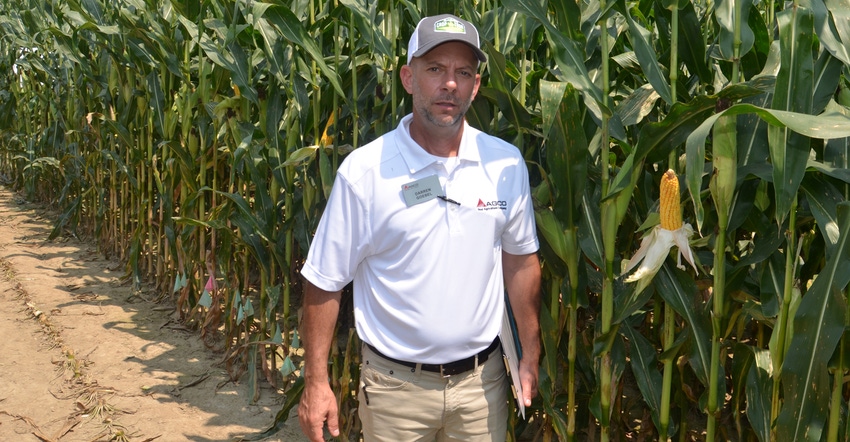
In the late 1980s and 1990s, Purdue University corn specialist Bob Nielsen was a regular at many planter clinics sponsored by various companies, no matter which make of planter was under scrutiny. He carried a simple message: His trials showed that the current planting accuracy in the average Midwest field was easily costing the grower 3 to 5 bushels of corn per acre. Growers soon got the message, and dealers began offering meter testing and tune-up options.
Today, most stands are relatively evenly spaced compared to the average stand three decades ago. More tools are available today to monitor accuracy of singulation and the stand, including Precision Planting’s 20/20 SeedSense monitor and other specific planter monitor models.
Pete Illingworth thought he was doing a good job of planting. He’s part of the farm crew at the Throckmorton Purdue Agricultural Center near Romney, Ind. Then he installed a 20/20 SeedSense monitor on his planter. With certain sizes and grades of corn, he was seeing 96% seed singulation display on the monitor. It didn’t seem like a big deal until he determined that with some tweaking and with other grades and sizes, he could easily reach 98% to 99% singulation. Stands were more uniform with fewer skips and doubles, he says.
Goof on purpose
Agco agronomists purposely planted with seed disks and settings that would give them less-than-desirable singulation during their three-year Crop Tour program, which included 20 trial sites across the country. One of those sites was just outside Union City, Ohio, sister city to Union City, Ind. Disks were modified to produce a certain amount of doubles and skips.
You didn’t need modification to get doubles and skips 30 years ago. Nielsen found those kinds of conditions in many fields while making the case to improve planter accuracy and produce more uniform stands to increase yields.
Here’s what Agco agronomists observed after three years, when all plot results for the singulation trial were combined, says Darren Goebel, agronomist and director of global agronomy and farm solutions for Agco. Modified disks produced 93% to 94% accuracy. Running a White 9800 Series planter with VE meters delivered 99.6% accuracy. That’s a 6.3% increase in accuracy compared to the modified seed disks, Goebel points out.
The yield difference averaged around 5 bushels per acre, with near-perfect singulation yielding more. At $3.50-per-bushel corn, that’s $17.50 per acre more for getting seed singulation right. On 1,000 acres, that would amount to $17,500. That could be a handsome payoff for time spent checking meters and double-checking details.
The other aspect that this Agco study looked at was planter speed. Many people preach slower planting speeds. If planters are equipped properly, including with high-speed tubes designed for faster planting, they can still do a good job of singulation, Goebel says.
In fact, in this study, there was no difference in yield between planting at 5 miles per hour and at 10 miles per hour. The planter was equipped with high-speed planting tubes.
About the Author(s)
You May Also Like




